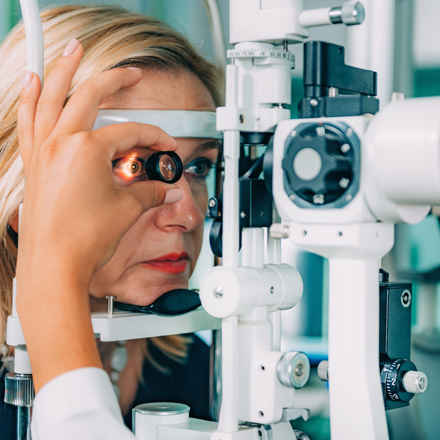Pioneering new eye test may predict wet AMD three years before symptoms appear
Posted: Tuesday 22 December 2020
Scientists from UCL and Western Eye Hospital, London, have collaborated on a pioneering new eye test that could predict wet age related macular degeneration (AMD), up to three years before symptoms develop.
Until now, detection of wet AMD relies on patients themselves seeking expert advice when they notice changes in their vision. If not diagnosed promptly, the disease can progress quickly and lead to central-vision loss.
How does it work?
The new predictive test, called DARC, which stands for Detection of Apoptosing Retinal Cells, involves injecting a fluorescent dye into the bloodstream, via the patients arm. The dye attaches to retinal cells and illuminates those that are undergoing a prolonged form of stress that leads to cell death, known as apoptosis.
These damaged cells appear bright white when viewed in eye examinations and could be a sign that the person is at risk of developing wet AMD within a few years. The new research, which is part of a larger, exploratory clinical trial, assessed 19 people who had already shown signs of AMD but not necessarily in both eyes. Using the DARC method, the researchers were able to predict wet AMD up to 36 months in advance of it developing.
A further challenge to early detection of wet AMD is that clinicians sometimes disagree on diagnosis when viewing the same scans. To resolve this, DARC includes an AI algorithm that has been trained to detect the formation of leaking and new blood vessels, which correspond with the bright white spots picked up by DARC.
What does this means for patients with wet AMD?
The researchers say their test could be valuable in detecting unhealthy retinal cells in someone affected by AMD, often in the opposite, unaffected eye. It may eventually be useful for screening people over a certain age or with known risk factors.
Geraldine Hoad, research manager at the Macular Society said “If DARC can identify those at greatest risk of developing wet AMD, we could monitor them more closely and treat them sooner, preventing unnecessary sight loss. The test could also be used in research on potential new treatments to see how well they work. It’s an exciting development and we look forward to it being tested on a larger number of people with AMD. ”
